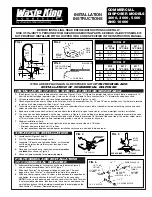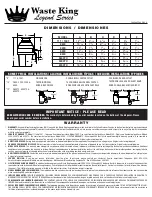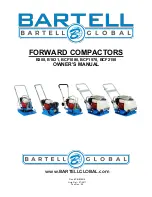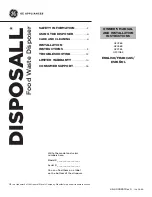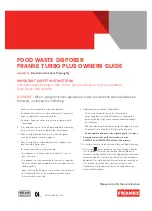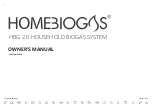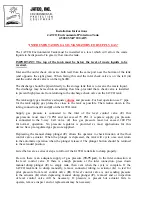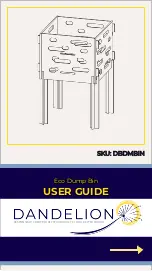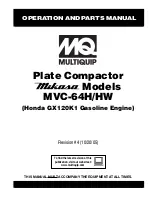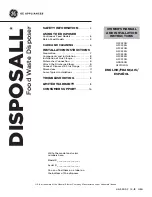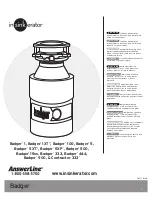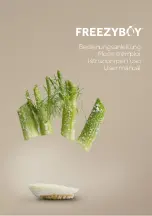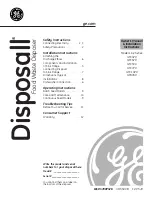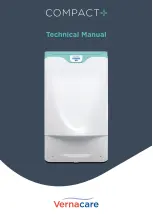
Use and Care of
waste
A
OF
SHOCK OR
PERSONS
using electric appliances. basic
precautions should always be followed, including
the following:
●
Read all the instructions before using the appliance.
●
To reduce the risk of injury, close supervision is
necessary when an appliance is used near children.
. Do not put fingers or hands into a waste disposer.
●
Turn the power switch to the off position before
attempting to clear a jam or remove an object from
the disposer.
. When attempting to loosen a jam in a waste disposer,
use a long
object such as a wooden spoon or
the
wooden
of a broom or
mop.
. When attempting to remove an object from a waste
disposer, use long-handled tongs or pliers.
nonmagnetic tools should be used.
To
the risk of injury by materials that may
be expend by a waste disposer, do not put the
following into a disposer:
●
Clam or oyster shells.
●
Drain cleaner.
●
Glass. china or plastic.
●
Large whole bones.
●
such as bottle caps, tin cans or aluminum
●
. When not operating a disposer. leave the drain cover
in place to reduce the risk of an
falling into
the disposer.
-
. Properly ground to conform with all governing codes
and ordinances.
details in Instigation
Instructions.
Write Down the Model
and Serial Numbers
bottom
disposer.
These numbers are also on the Consumer Product
Ownership Registration
which came with your
sending in this card,
write these
numbers
Model Number
Number
U
SC
these numbers
correspondence or service
calls concerning your disposer.
immediately
the
(o
r
builder)
the disposer.
How the
wastes are fed into the
through the
sink drain
The
into the grinding
mechanis
m
and are
into
small enough
to floated away by the
running through
holes in the
and the
around the
flywheel.
the
on the flywheel
hard
they
swivel back to
reduce the possibility of jamming.
What It Grinds
The disposer
items of food waste.
Naturally, som
e
require
time to grind than
others.
such
fat,
and hard bones take
longer to grind than vegetable parings.
grinding
A Quality
of





